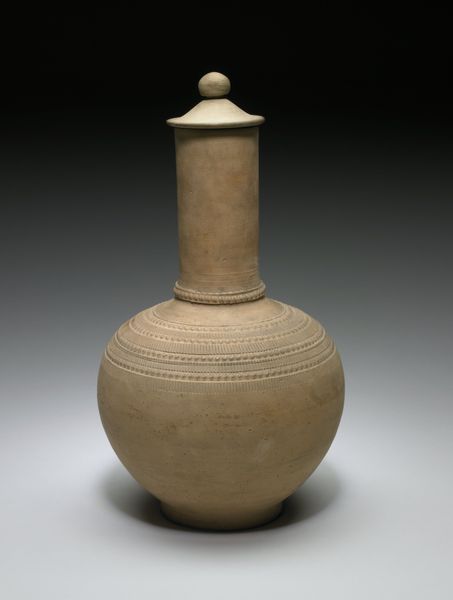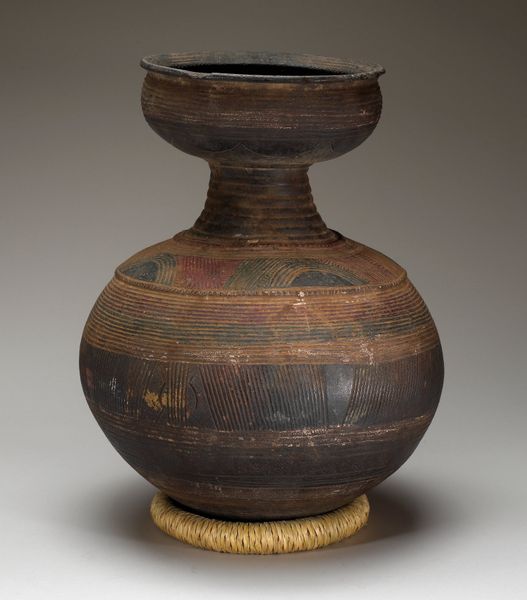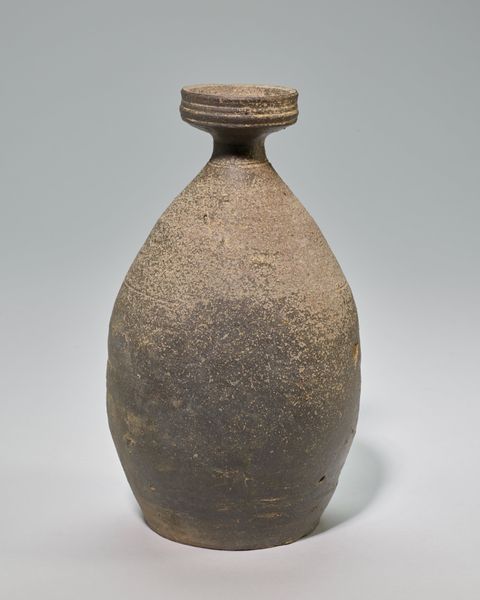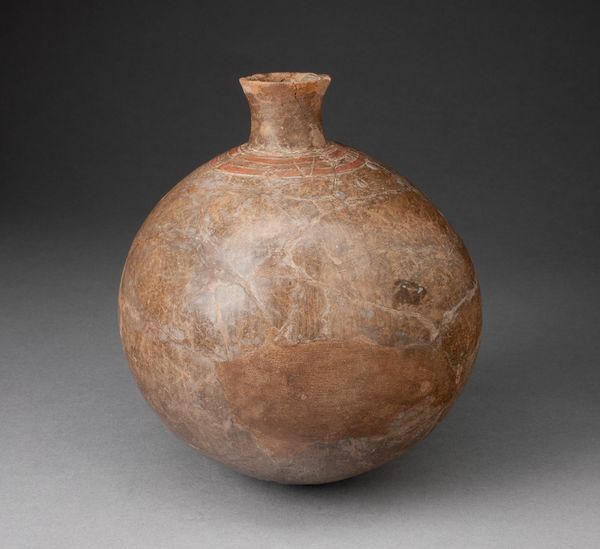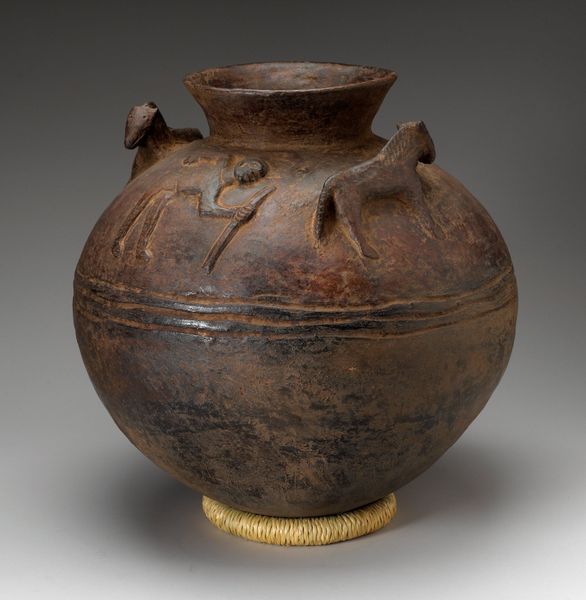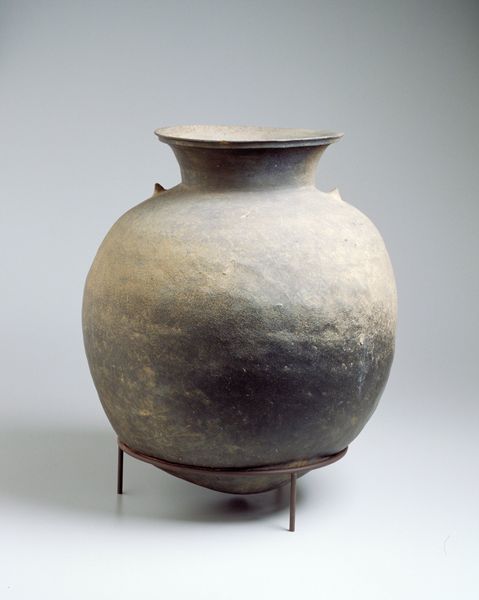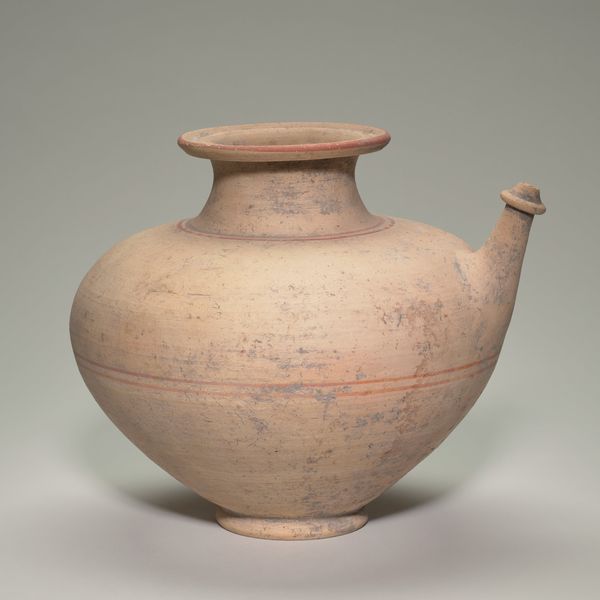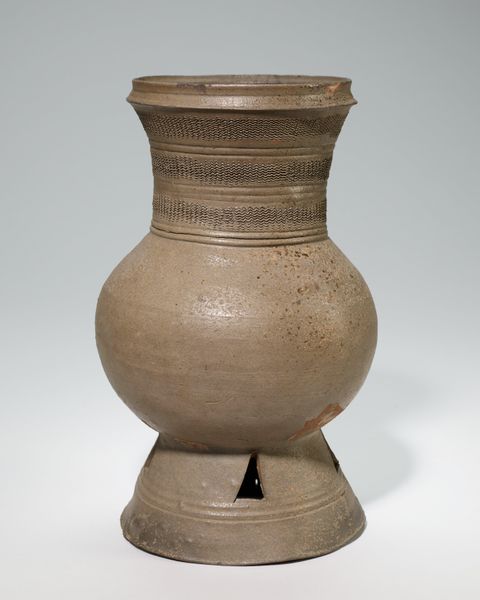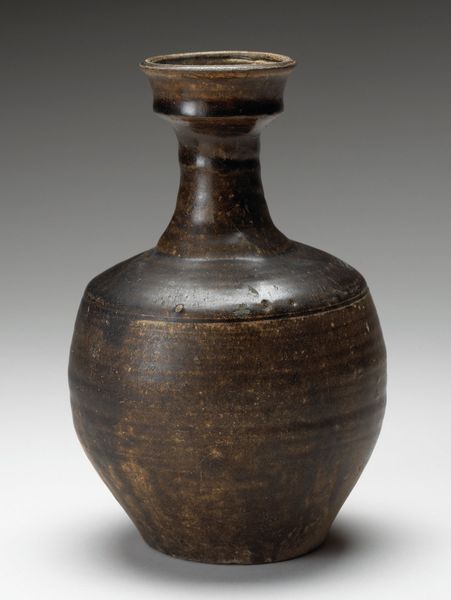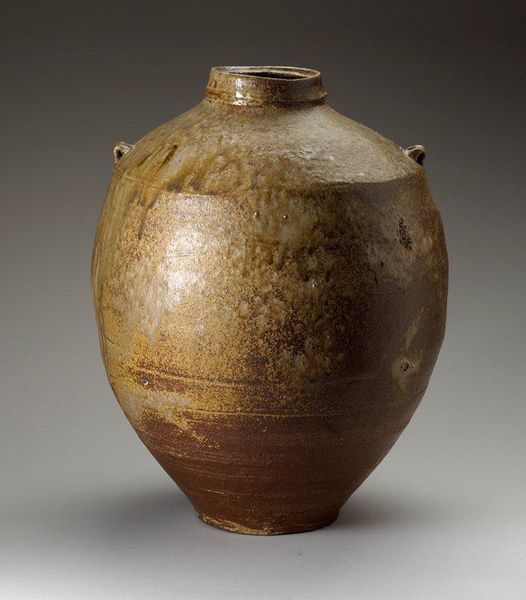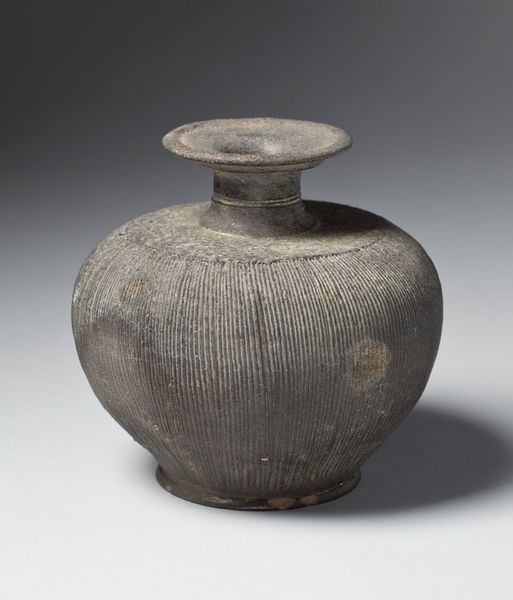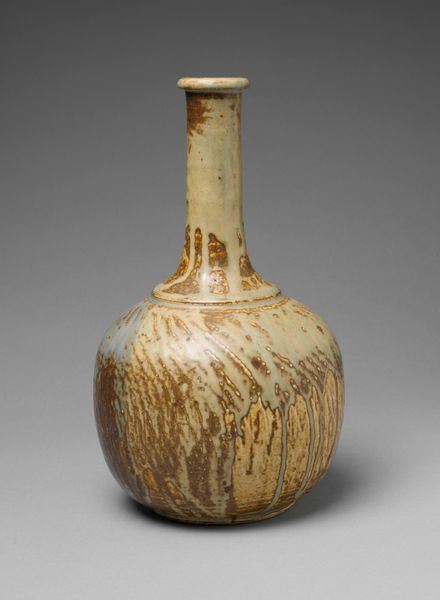
ceramic
#
egyptian
#
ceramic
#
ancient-egyptian-art
#
form
#
ancient-mediterranean
#
ceramic
Dimensions: 12 1/16 x 6 13/16in. (30.6 x 17.3cm)
Copyright: Public Domain
Curator: This ceramic vessel, aptly titled "Water Bottle," comes to us from 19th-century Egypt. We can find it here at the Minneapolis Institute of Art. Editor: Immediately striking, it is austere yet functional looking, that cylindrical neck leading down to the bulbous body. The clay feels so elemental. Curator: Yes, the form speaks volumes, doesn't it? It's a testament to the everyday life in that period of Egyptian history, a crucial tool made beautiful by its purpose and, arguably, the care given to its creation. These bottles weren’t mere containers, they shaped cultural practices around hydration and resource management. Editor: Absolutely, and let's consider who had access to clean water, to resources like these vessels. Who carried water? Who was denied it? These aren't neutral questions, right? Objects like this can illuminate broader issues of social stratification, which are present even now in our global struggles for clean water access. Curator: I agree. Moreover, we might even examine how museums play a part in representing such historical disparities or obscuring it from the context of these bottles. Editor: Looking closer, you've got the horizontal bands of decoration encircling the main body, creating zones of visual interest that really ground the object in its time and place. Do you think the simple embellishments speak to a societal aesthetic? Curator: No doubt. These repeating patterns are hallmarks of both function and decor in Egyptian utilitarian pieces. Also the act of potting is itself is bound by socio-economic frameworks. In what workshop and at whose pleasure was the artisan laboring to produce an object of daily use such as this? It also leads us to consider if, now enshrined within the glass confines of the modern museum, these water vessels have in fact become un-moored from any useful utility beyond being gazed at for the pleasures of art history? Editor: A thought-provoking question! Examining art through an intersectional lens reveals the social narratives woven into form, and it allows us to contextualize the struggles—past and present—embedded in an object we’d usually see as simple. Curator: It truly brings a new awareness to the social and political dynamics that existed in that culture. Thank you! Editor: Thank you, I found it an insightful investigation into object hood and the complex matrix within which these simple forms gain importance and presence!
Comments
No comments
Be the first to comment and join the conversation on the ultimate creative platform.
